Even in sunny South Africa, European winter traditions are evident at Christmas time. There are Christmas cards that feature red-breasted European robins and there was a time when shop windows sported cotton-wool snow and plastic holly, even though December is at the height of the southern hemisphere summer!
In the colonial era, British settlers the world over, named orange-breasted and red-breasted birds “robins”, and ignored the fact that these so-named birds were in fact from different species. Here in South Africa, birds that were formerly called robins are now more correctly called robin-chats.
In our garden, we have two kinds of robin-chat, the most noticeable being the highly vocal aptly named Chorister Robin-Chat. It sings loudly, especially during the breeding season, and is adept at copying the sounds not only of other birds, but also the sound of dogs barking, humans whistling and car alarms. For many years, a bird in our garden accurately imitated the way we whistled for our dogs. At dusk when these birds are more vocal, should we repeat our distinctive “dog whistling” a few times, the bird would often respond “dog whistling” back in response. For more on bird vocal copying see my post Birds just wanna have fun
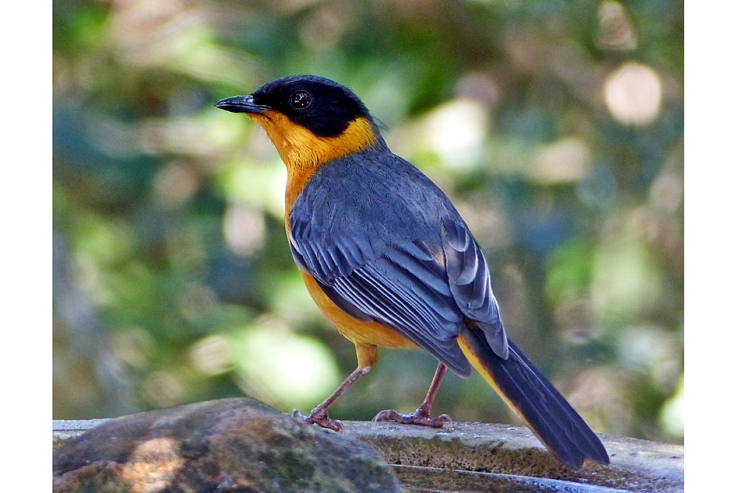
Although the Chorister Robin-Chat’s orange underside is vivid, the contrast of the orange with the navy colouration on the head, back, wings and tail is most striking.
Endemic to the eastern regions of Southern Africa, the Chorister Robin-Chat favours forest habitat, and it visits gardens that border on or replicate such cover. It forages on the ground as well as in trees for insects and other invertebrates, and it also eats some berries. It is usually seen singly, although often its mate is nearby. They are monogamous and the pair-bond usually lasts for the life of one or other of the partners. Should a bird be widowed it will find a new mate. The nest is usually built by the female and both parents feed the young.
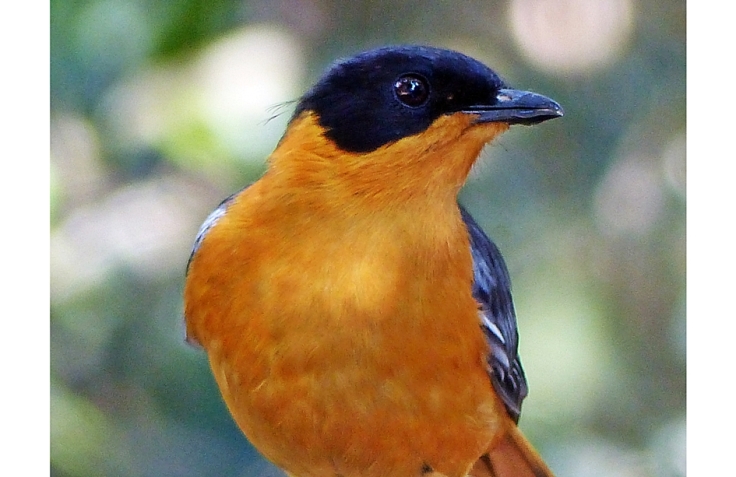
It’s is easy to see from its handsome appearance why the virtuoso songsmith, the Chorister Robin-Chat, is one of my favourite garden birds.
Although it also occurs in our region, I have yet to see the Natal Robin-Chat in our garden, but it is very likely around. The other robin-chat that is evident in our garden is the Cape Robin-Chat. Like the Chorister, it prefers access to dense cover, but it is not limited to evergreen forests. It also occurs in thickets, fynbos and scrublands, as well as in gardens.
It too feeds on the ground, and is commonly seen (or heard) rustling through leaf litter in pursuit of food. These birds are another good reason not to sweep up fallen leaves in the shrubbier and treed sections of the garden. Its diet is similar to that of the Chorister, and it also eats small frogs and lizards.
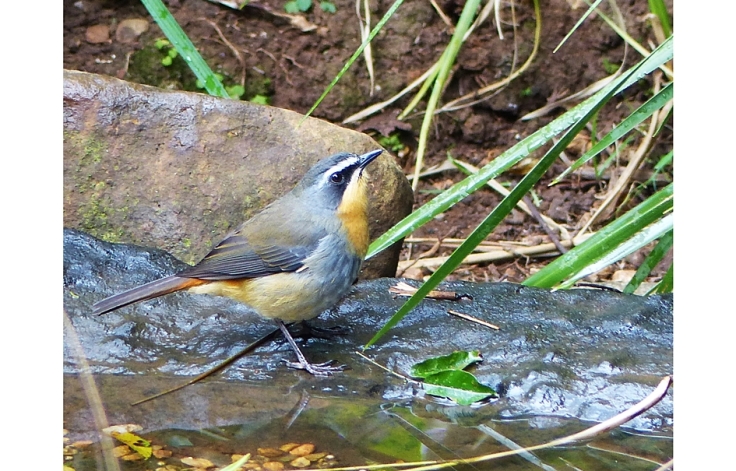
A Cape Robin-Chat about to take a bath in our garden pond. Like the Chorister Robin-Chat, they need ready access to water for drinking and bathing.
The Cape Robin-Chat is a common host of the Red-chested Cuckoo (also known as the Piet-my-vrou). It is sadly comical to see an adult Robin-Chat feeding a cuckoo chick that is larger than the parent. The hardworking parents seem to struggle to keep up with the demanding cuckoo chick’s apparently voracious appetite.
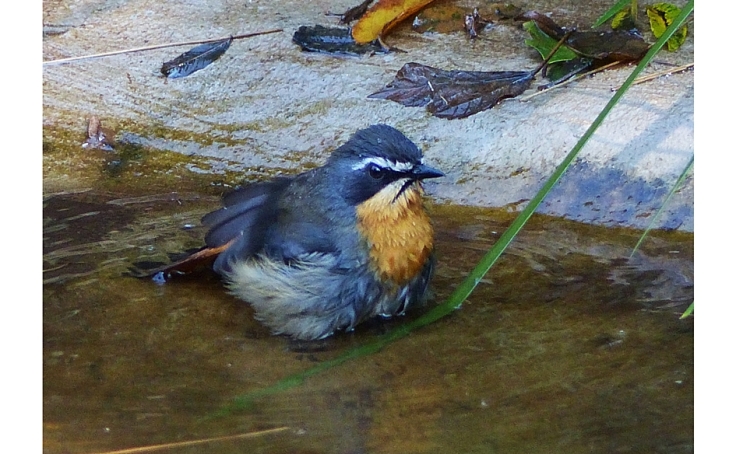
Although its name indicates otherwise, the Cape Robin-Chat occurs as far north as Sudan and is found in most of east and southern Africa. In an online survey, BirdLife Africa invited South Africans to vote for their favourite bird, and the most popular bird, announced in 2015, was the Cape Robin-Chat. Despite being much loved, I have yet to see it being featured on a Christmas card! ★
Posted by Carol at letting nature back in.
Sources: Roberts VII Multimedia PC Edition. 1997-2016 Southern African Birding. For details go to http://www.sabirding.co.za/roberts7/portal.html
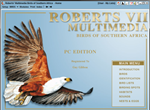
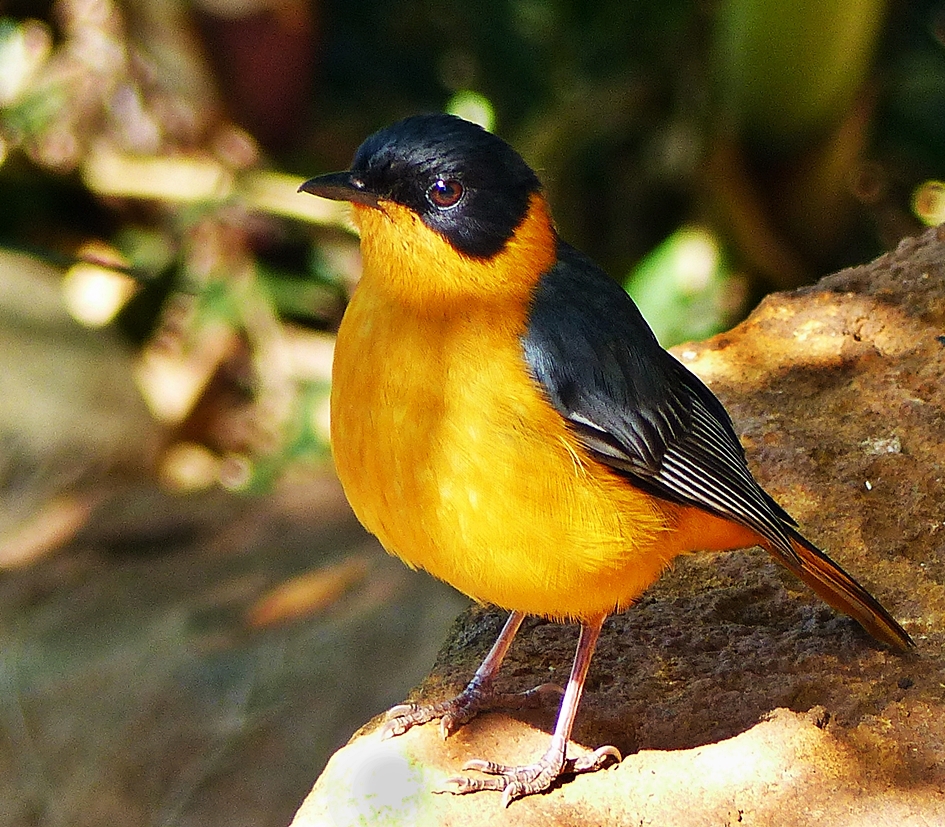







August 21, 2017 at 7:55 pm
Likewise! The plants and wildlife where you live are so varied and interesting. Thank you re use of your photo and I’ll let you know when I publish the black and yellow post.
LikeLiked by 1 person
August 21, 2017 at 8:31 am
Hi Carol. I’ve been enjoying looking thru your photos. I’ve actually had a copy of the top photo from this post saved on my computer for a while because I’m putting together a folder of “black and yellow” photos to do a post. Would you permit me to include this photo in my post? I’d credit it to you and link back to both the post and blog home. You can see what I do at https://exploringcolour.wordpress.com/2017/08/19/perfect-match/ Pls let me know – thanks!
LikeLike
August 21, 2017 at 4:17 pm
Hi Liz. Thanks for spending time on my blog. I have just had a quick look at your blog, and what an interesting approach to images and photography. Yes, I am happy for you to use the photo at the top of this post as you suggest, and I look forward to seeing the other “black and yellow” photos. Nice to make your acquaintance!
LikeLiked by 1 person
August 24, 2017 at 4:53 am
Hi Carol! The post on “black and yellow” is now online at https://exploringcolour.wordpress.com/2017/08/24/i-see-black-and-yellow/ Thanks for allowing me to use your photo and I hope you enjoy the image selection when you visit!.
LikeLiked by 1 person
August 24, 2017 at 5:16 am
Thanks Liz. I will be visiting later today.
LikeLiked by 1 person
July 14, 2017 at 10:43 pm
Beautiful photos and very interesting story. Thanks for sharing.
LikeLiked by 1 person
July 15, 2017 at 4:53 pm
Thanks so much. Pleasure to share about these lovely little birds!
LikeLiked by 1 person
December 25, 2016 at 8:41 am
I adore Chorister Robins and enjoy them singing cheerily in my garden. What a delightful morning I am having browsing through your blog which I don’t usually have time to read – let alone comment!
LikeLike
December 27, 2016 at 6:09 am
I appreciate that you are using your time to browse my blog and thanks so much for taking the trouble to comment! So pleased that you are enjoying the posts and I am enjoying reading your comments. Chorister Robins certainly do sing cheerily and what would summertime dusk be without them?
LikeLike
December 14, 2016 at 4:14 pm
Lovely photos. Seeing them has given me a pang of nostalgia. We used to have robin chats in our Nairobi garden, and lots of other beautiful birds besides. I miss them and the twilight robin chats’ song. It often used to coincide with the call to prayer at the nearby mosque.
LikeLike
December 15, 2016 at 1:36 pm
Thank you Tish, and for sharing a lovely layered memory.
LikeLiked by 1 person
December 12, 2016 at 2:57 pm
You inspire me to dig up my photos of English Robins for Christmas.
LikeLiked by 1 person
December 12, 2016 at 4:18 pm
That’s great 🙂
LikeLike
December 11, 2016 at 9:28 pm
They’re beaut little birds and I now know a little about them – thank you.
Frank
LikeLiked by 1 person
December 12, 2016 at 5:27 am
Thanks Frank – I wish you could hear their calls too!
LikeLiked by 1 person
December 11, 2016 at 8:31 pm
Gorgeous avian shots! 🙂
LikeLiked by 1 person
December 12, 2016 at 5:25 am
Thanks Tom 🙂
LikeLiked by 1 person
December 11, 2016 at 8:03 pm
This is such an interesting and informative post! The presence of Cape Robin-chats in our garden make me feel quite privileged and I love listening to their calls early in the morning and late in the afternoon. As an aside, Christmas cards seem to be going the way of handwritten letters – one hardly sees them for sale anymore – but I too have often wished in the past that ‘our’ birds could take their rightful place on them.
LikeLike
December 12, 2016 at 5:25 am
Thanks Anne. Yes indeed, posting Christmas cards is becoming redundant in this digital age. Not too long before they become collector’s items!
LikeLiked by 1 person